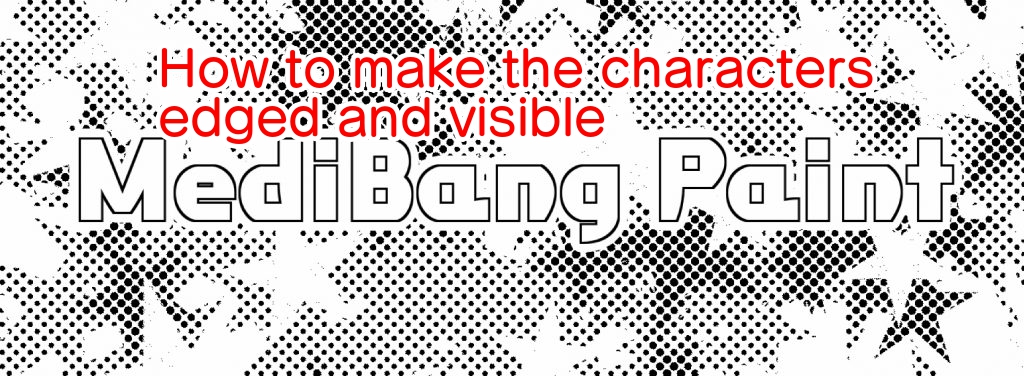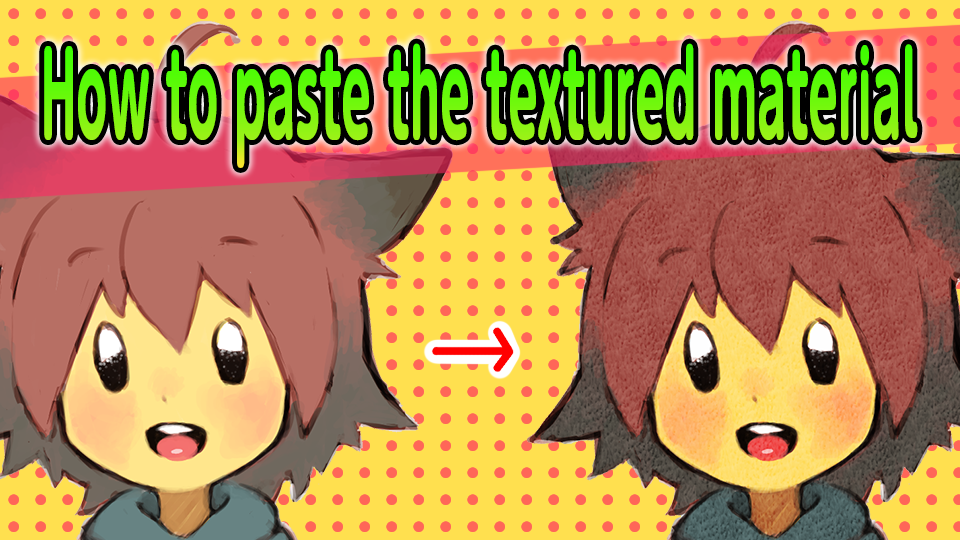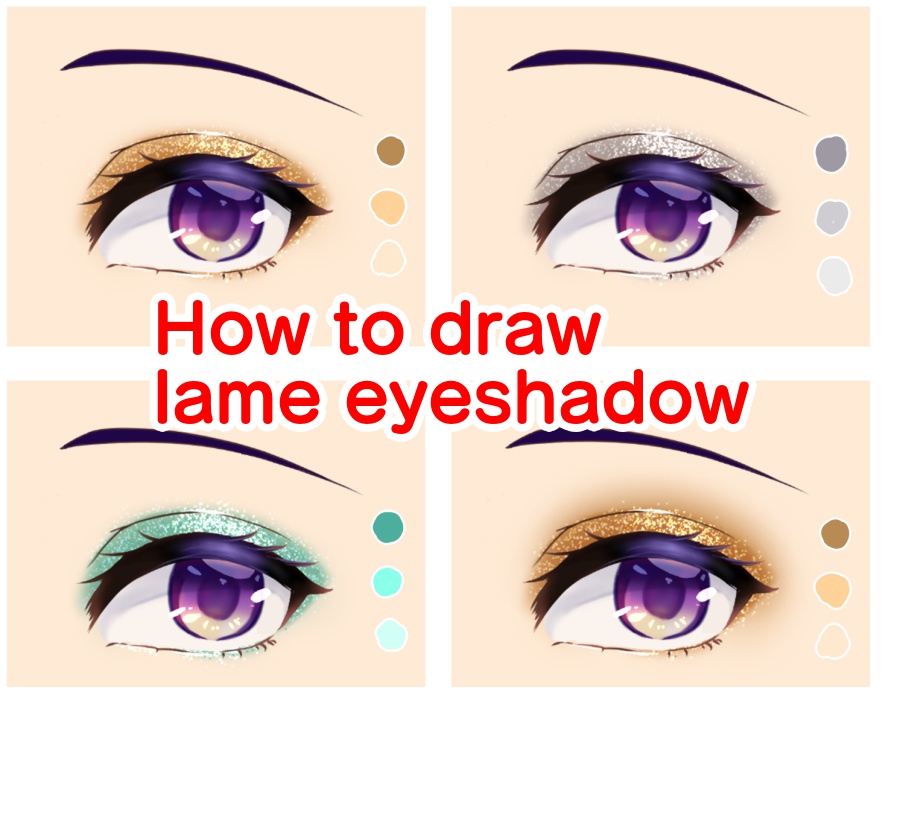2020.08.12
How to draw a dog (2) How to draw the body and pose

Each type of animal’s body has its own characteristics.
In this article, we’ll show you how to draw the body of a dog, which is one of the most common animal bodies you’ll see on a daily basis.
Index
1. Knowing the skeleton of a dog
When drawing an animal’s body, it’s easier to draw it if you know the skeleton first.
So let’s see what a dog’s skeleton looks like first.

If you want to know the exact shape and details of a dog’s skeleton, please look for it in a anatomy book or on the Internet.
When you look at the skeleton, you should pay special attention to the position and curvature of the joints.
Make sure you know where and how your body parts bend.
◆Difference between dogs and cats
If you want to draw a dog and a cat differently, make sure to keep their characteristics in mind as shown below.

Dogs: Straight legs and generally square and stiff impressions.
Cats: round, curved and soft.
2. Drawing
Once you have the skeleton, we will start drawing the actual dog.
The first step is to draw the approximation and then the line drawing.
Now let’s take a look at each step of the process.
(1) Draw the approximation
When drawing the approximation, first draw the head, shoulders, and hips as circles to determine their respective positions.
Let’s draw the hips a little smaller than the shoulders.
Then, while keeping in mind the skeletal structure you’ve just described, draw the positions of the legs and other parts.
It may be easier to draw each part of the body, such as from the elbow upwards and from the elbow downwards, or draw the joints as spheres and draw other bones as lines.
Draw the overall image in a straight and square shape and position each part.
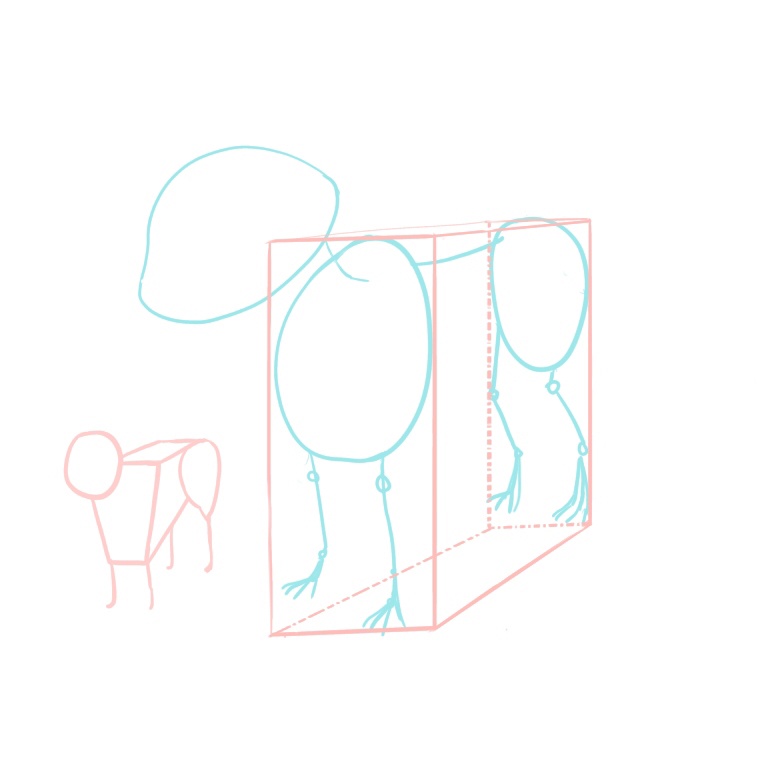
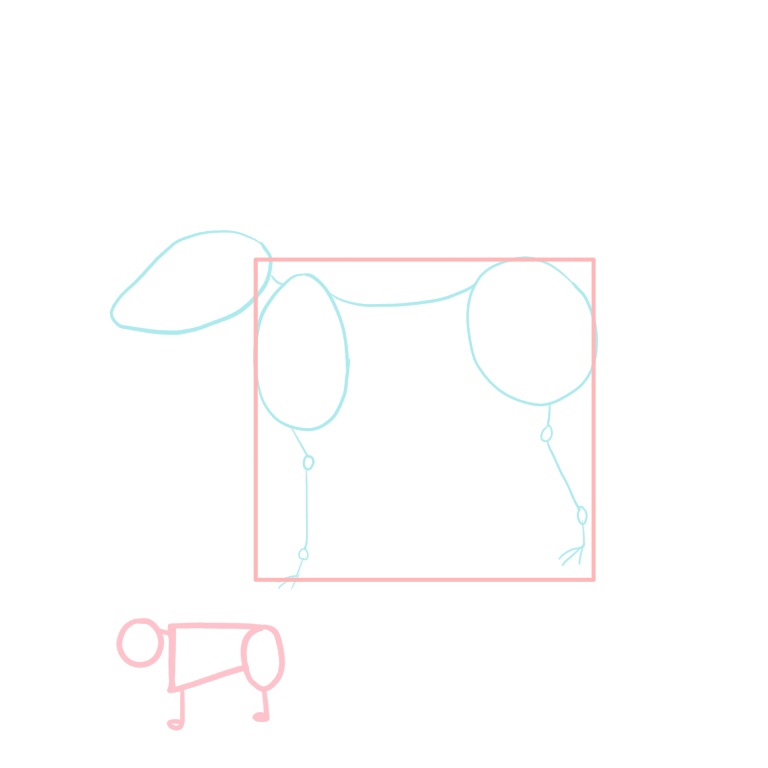
(2) Create the line drawing
Once I was able to draw the approximation, I begin my line drawing.
In the approximation stage, I paid more attention to the dog’s skeleton but now I will be paying close attention to the overall body image.

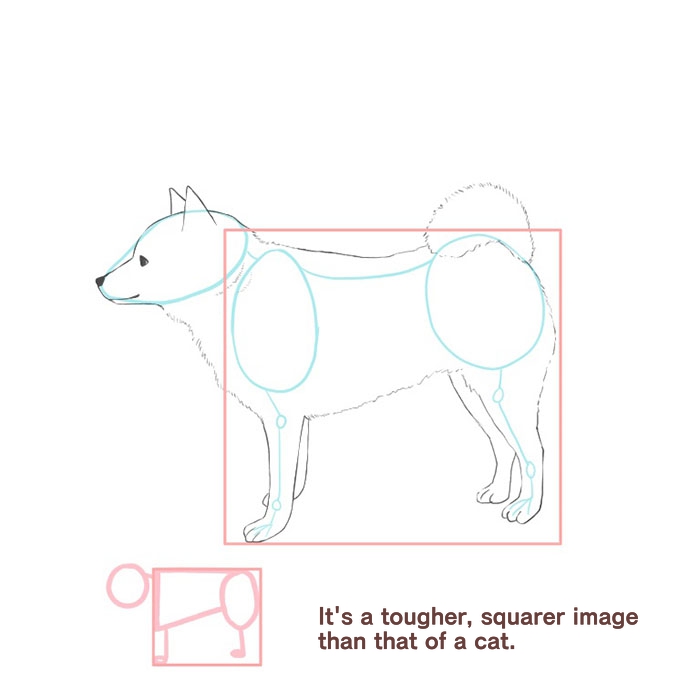
A chubby dog gives the impression of being cute, while dogs with firm bodies gives the impression of being cool.
Just like how it is said that “Shiba Inu is chubby” and “Doberman is firm,” you can adjust their plumpness to suit the dog’s breed or the dog’s character.
(3) Paint the color
Draw a solid line and then color it to finish.
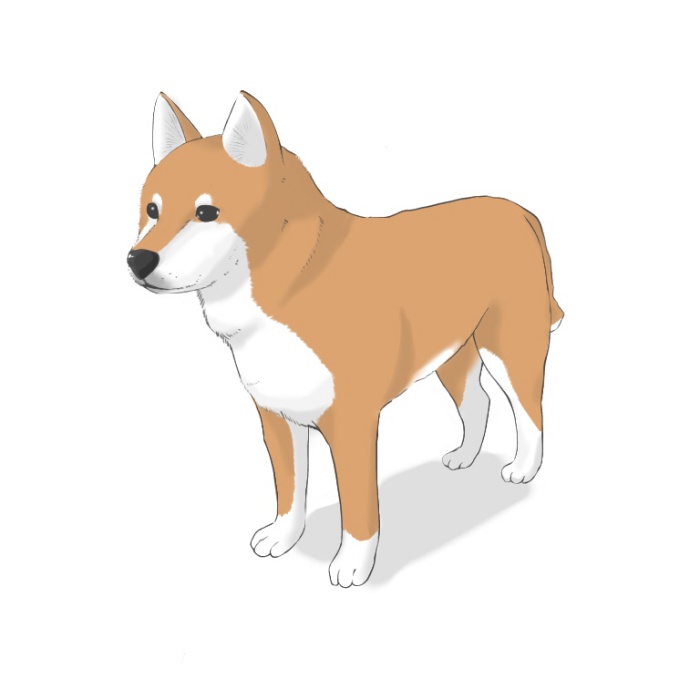
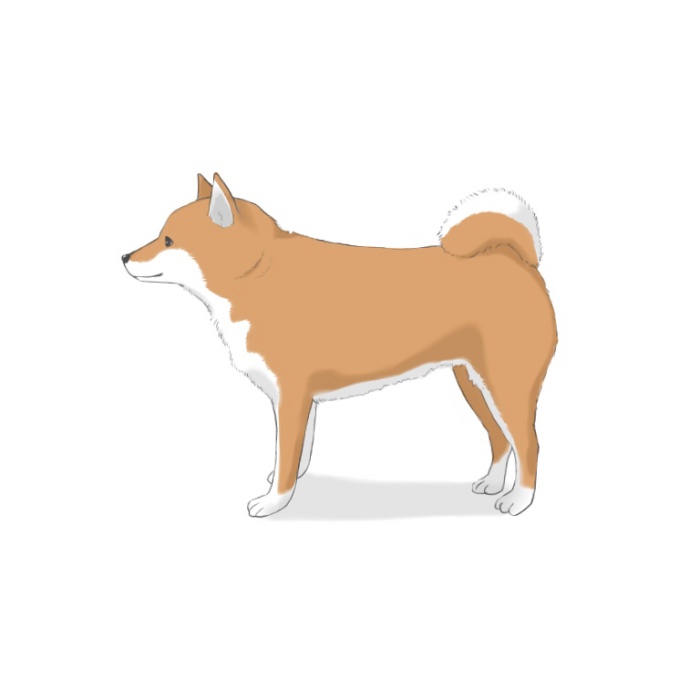
3. How to draw common poses
Once you’ve got a handle on how to draw the dog’s body, it’s time to draw some common poses.
Here are three poses that you can use as a reference: sitting, sleeping, and the “I don’t want to leave” pose.
(1) Sitting down
The sitting pose is like a frog sitting, where they sit with the knees bent.
As for the approximate positions, you should draw the head first, then the shoulders to the front legs, and then a slightly flatter waist.

A dog’s body is slightly stiffer than a cat’s, so its back is relatively straight when viewed from the side.
If you want to be aware of the distinction between drawing a dog and a cat, you should be aware of this part of the body.
(2) Sleeping
Dogs often lie down to sleep and may flap their legs when they are asleep.
When that happens, they may be dreaming of running around somewhere.
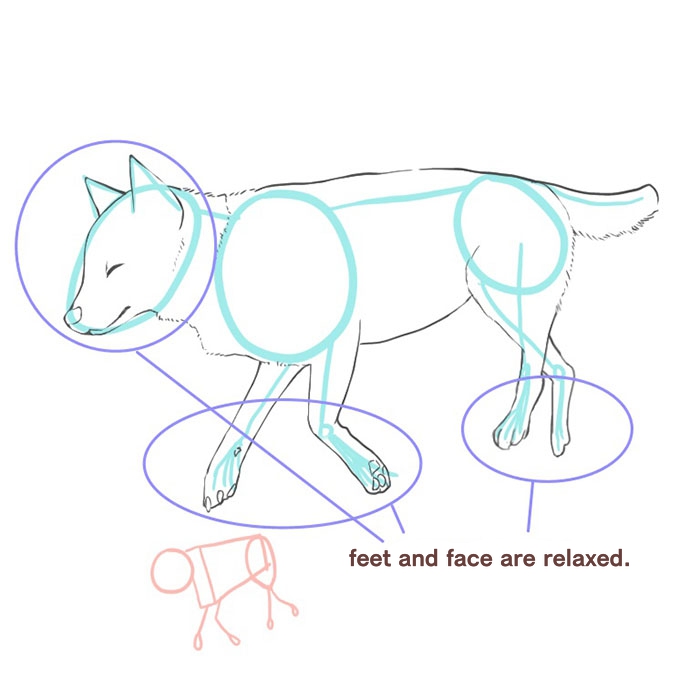
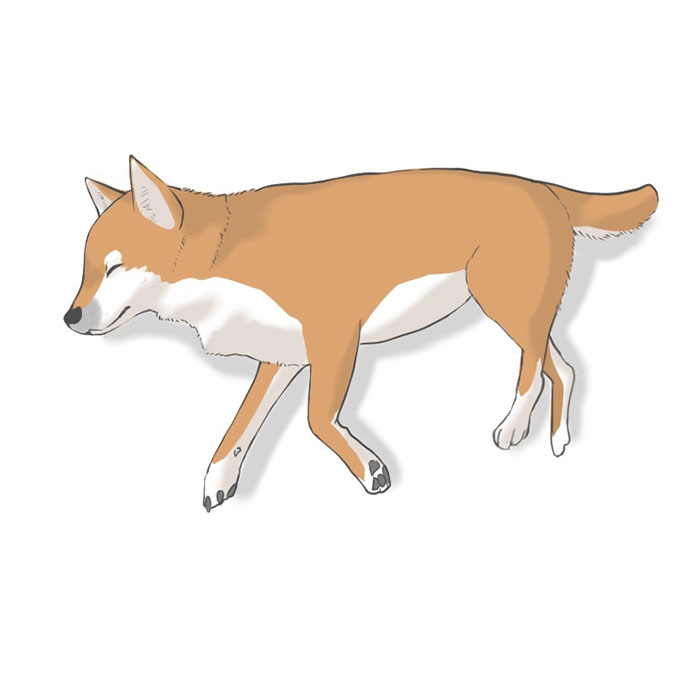
Lying down is similar to standing pose, but when dogs are standing, their legs are supporting the body and keeping it taut.
In contrast, when they are lying down, their legs are also lying down in a relaxed manner.
When you draw the face, imagine a slightly relaxed expression and not just the eyes closed.
(3) The “I don’t want to leave” pose
This is the pose of a dog struggling to resist, not wanting to return from a walk.
The collar makes the cheeks lean in, giving it a plump and cute appearance.
When drawing the position, the head should be a slightly flat oval shape.
The body should be in a place where you are stepping on it to keep it from being pulled backwards and forward.
Stretching out its legs as if it’s pulling in the opposite direction of the lead, makes it look like a dog.
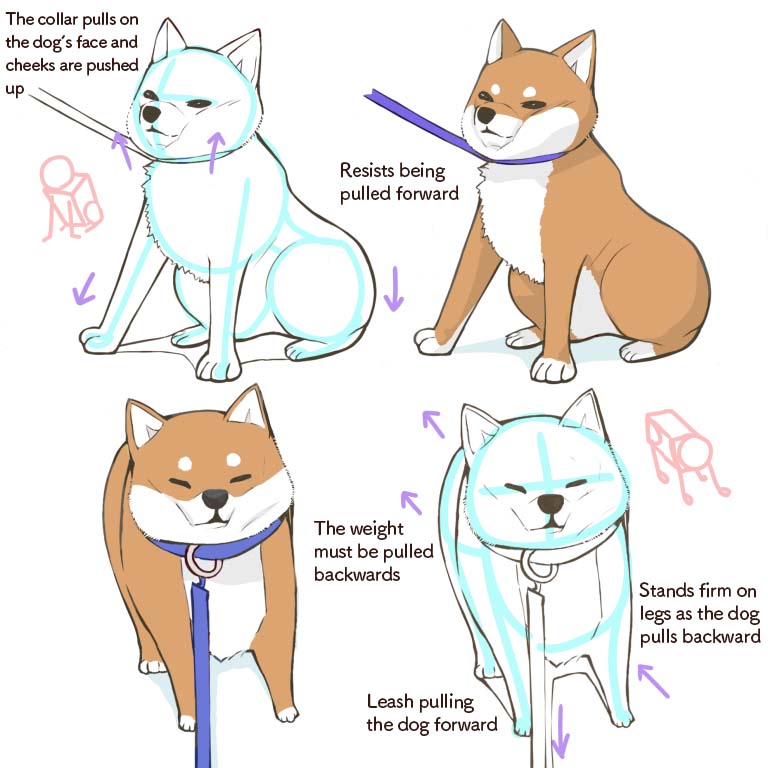
4. Summary
What did you think?
In this article, we’ve introduced how to draw the Shiba Inu, a common dog breed in Japan, but the shape of the body changes depending on the type of dog.
Use photos and real observations for reference and draw dogs accordingly to their unique characteristics!
\ We are accepting requests for articles on how to use /

